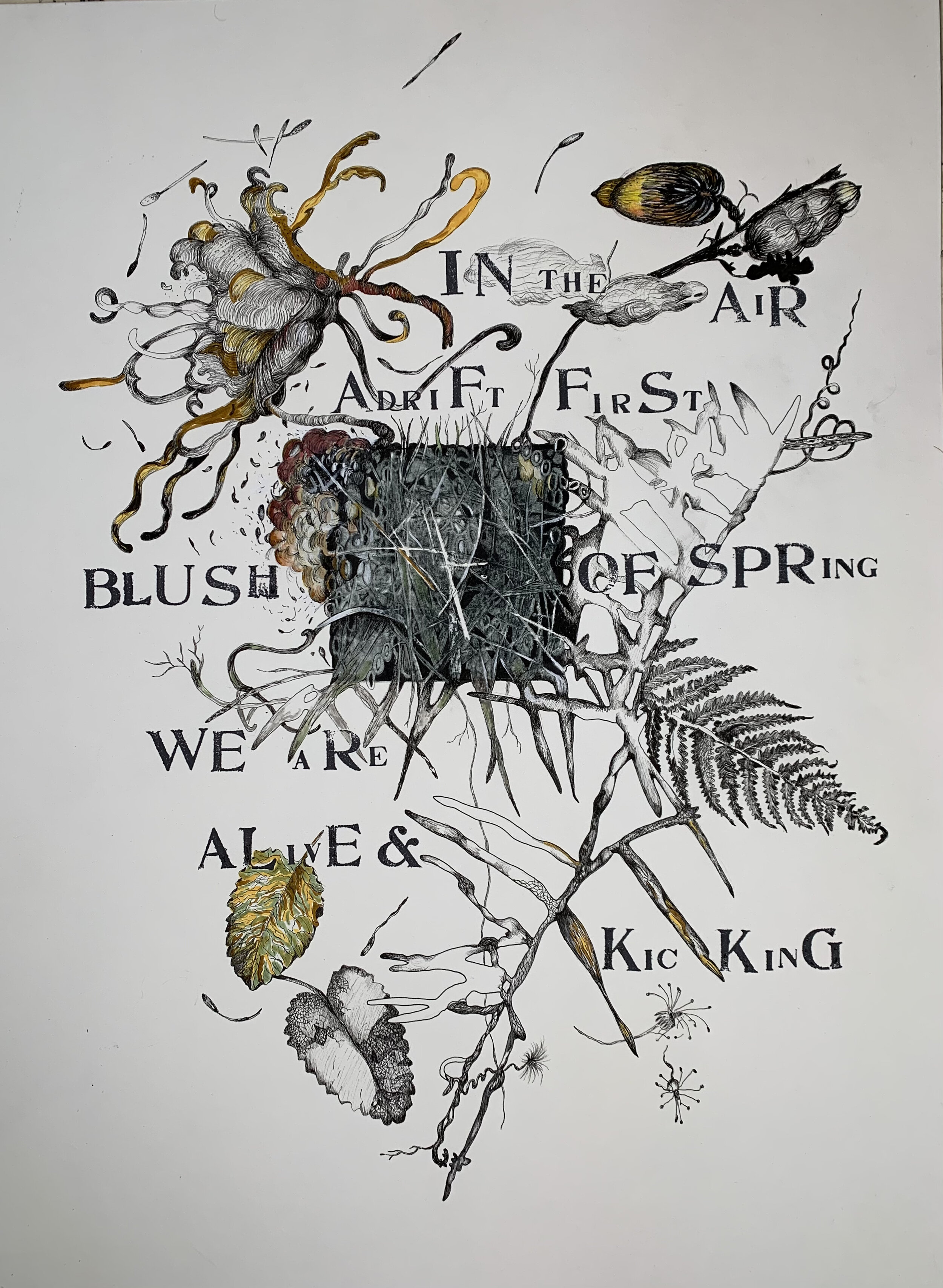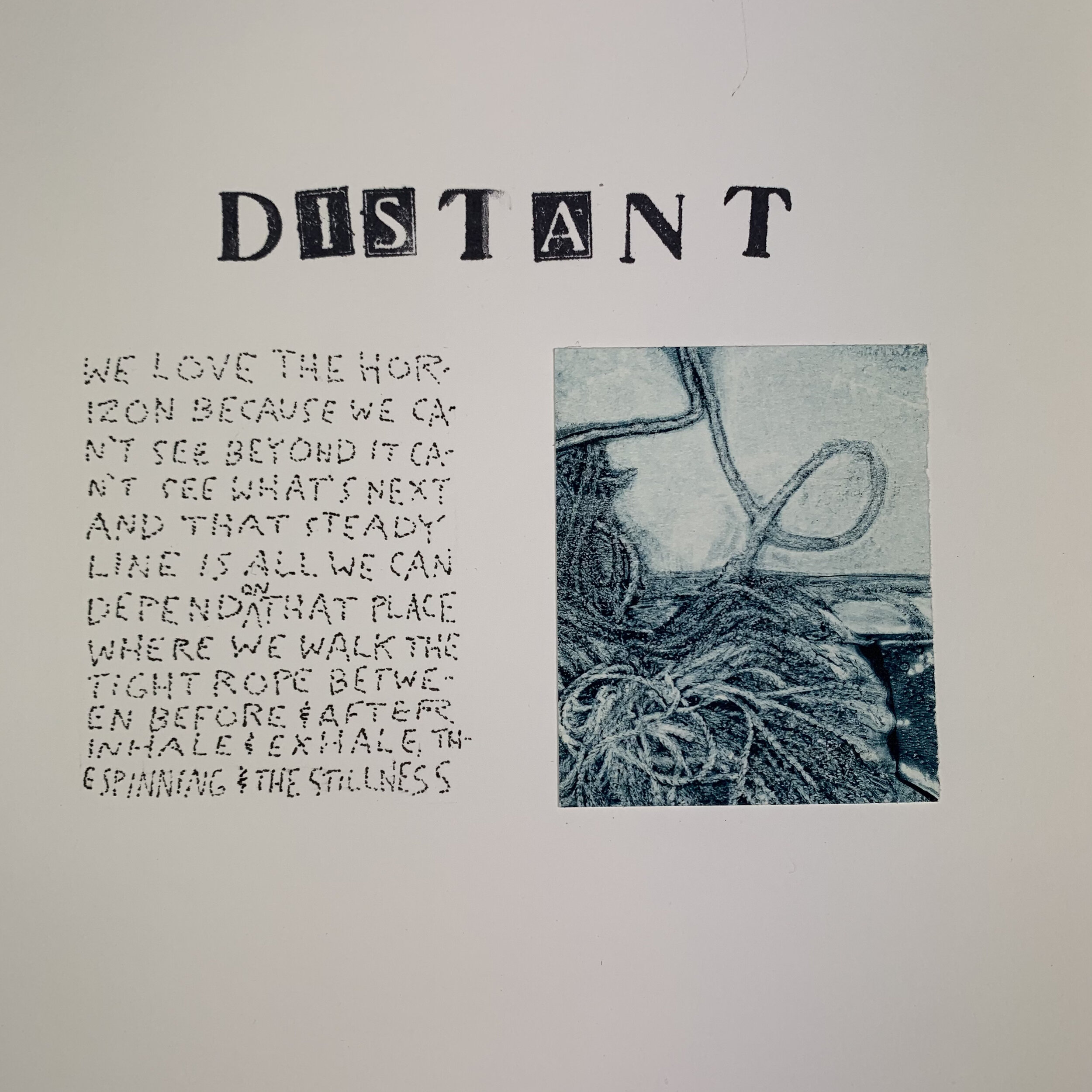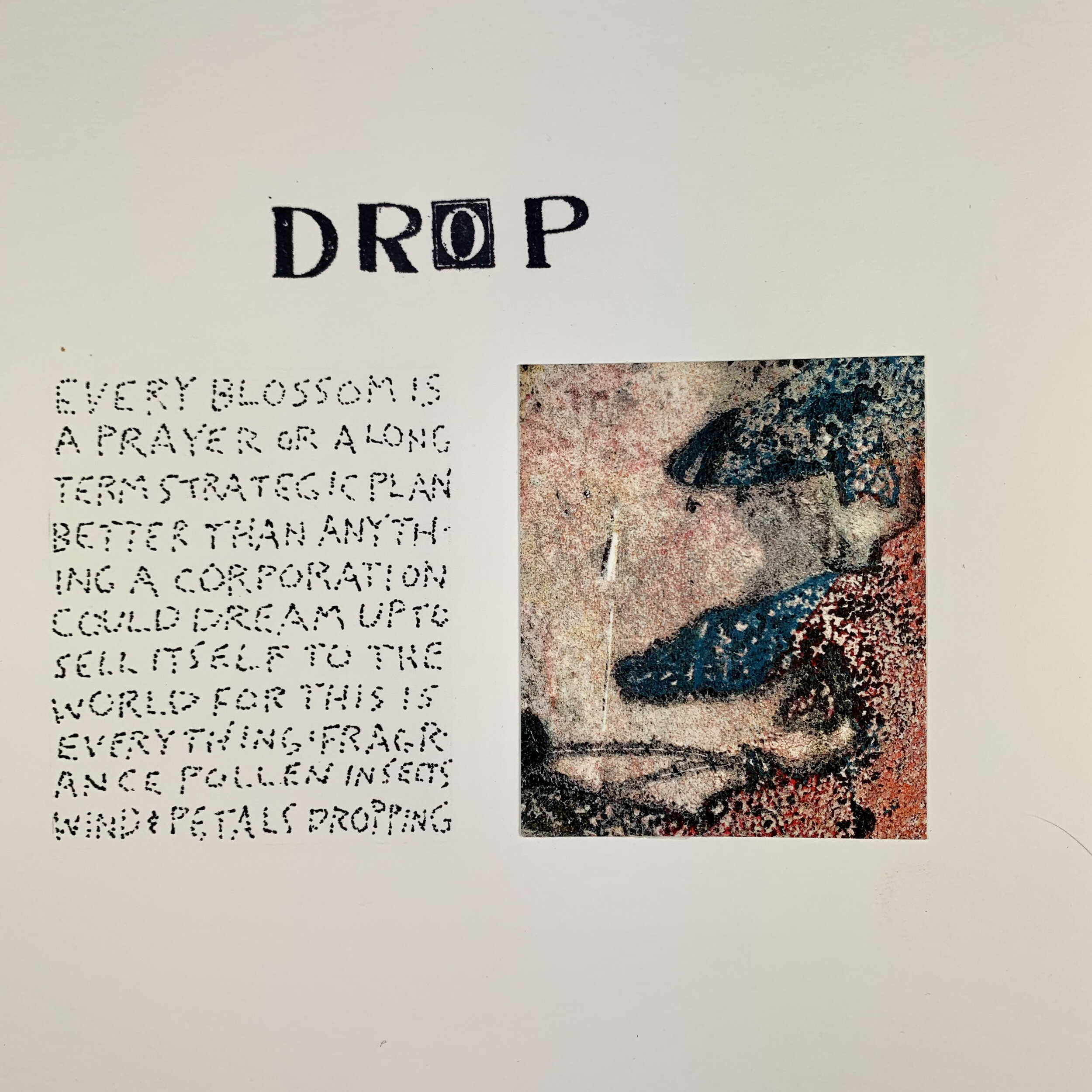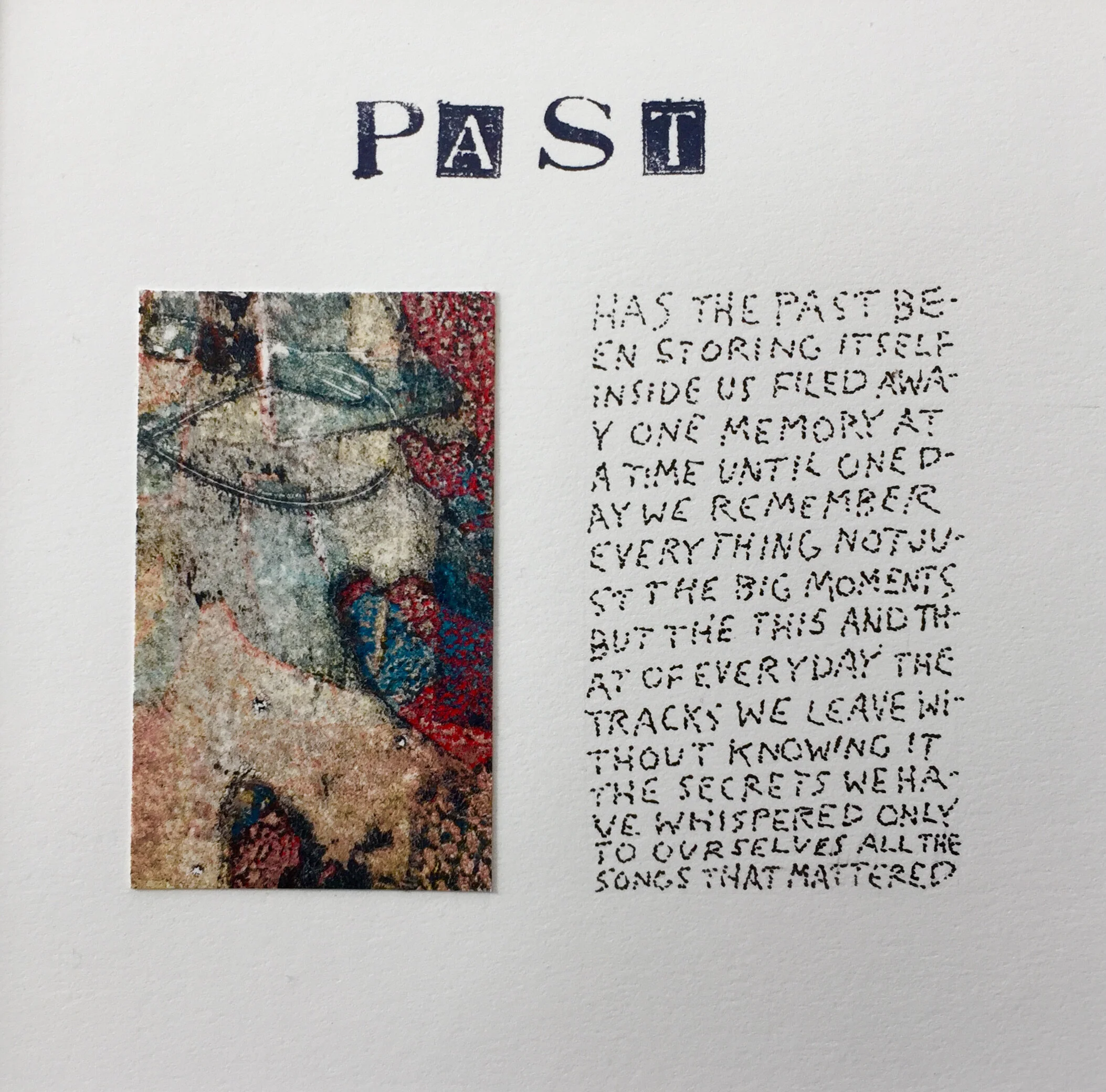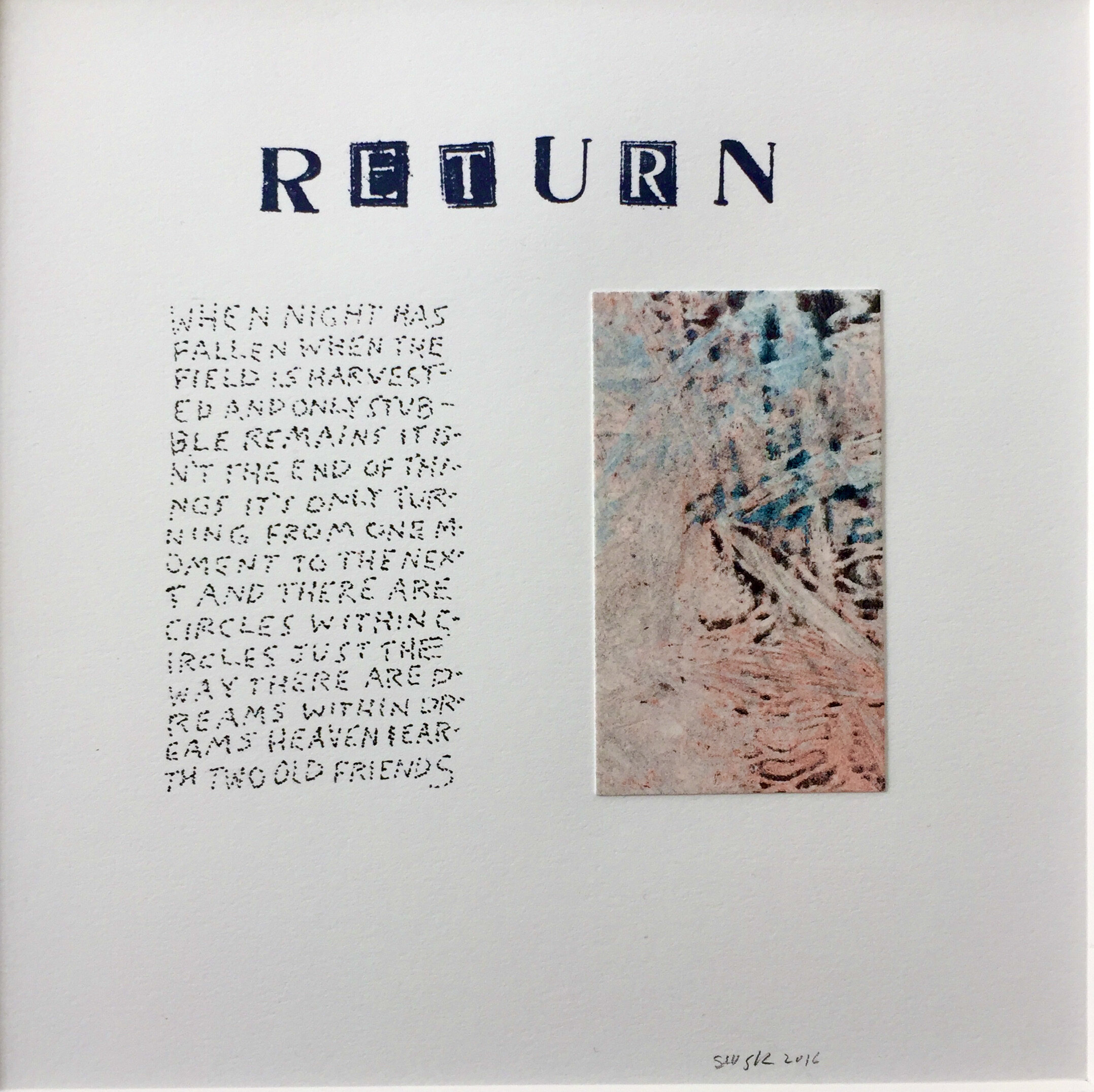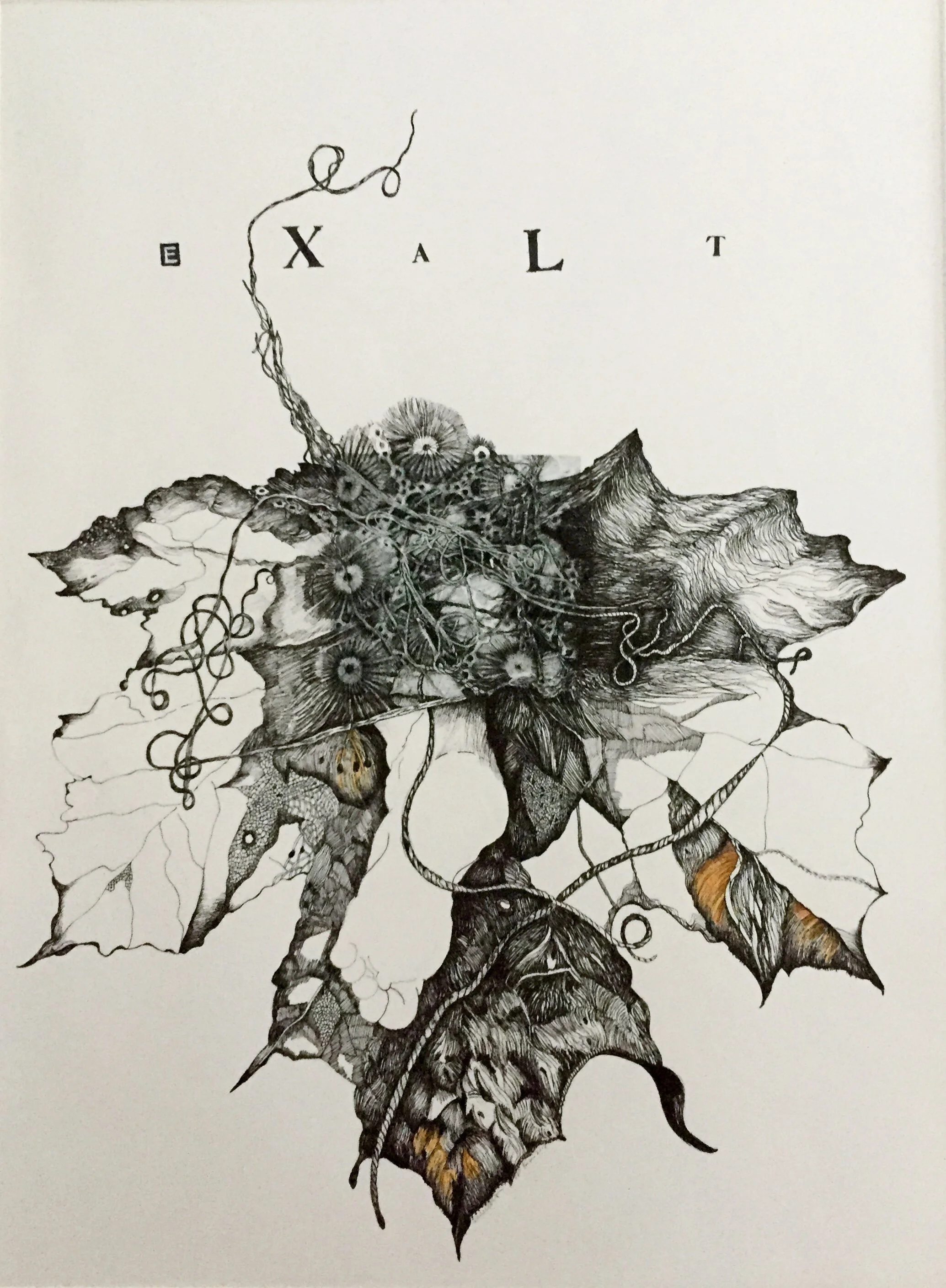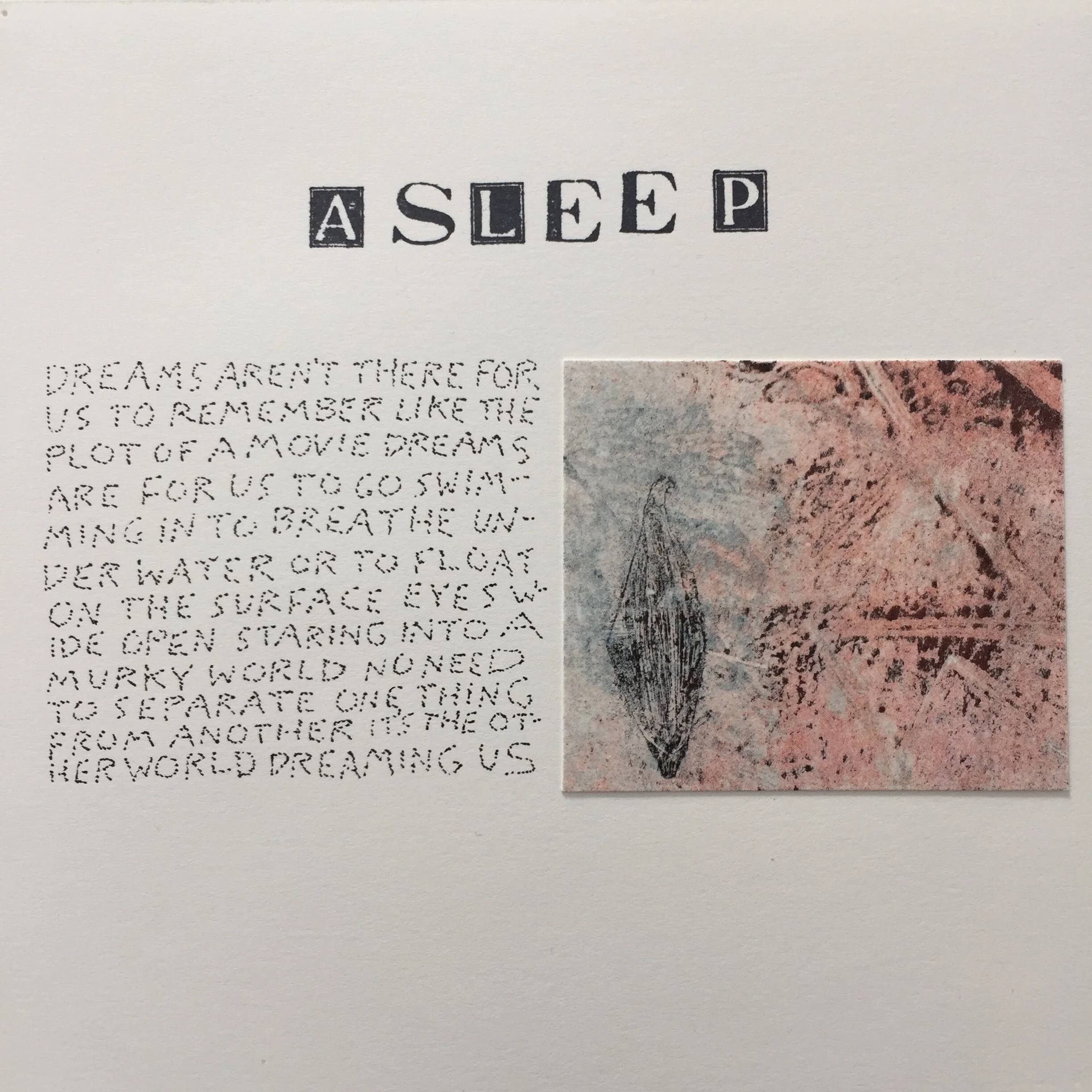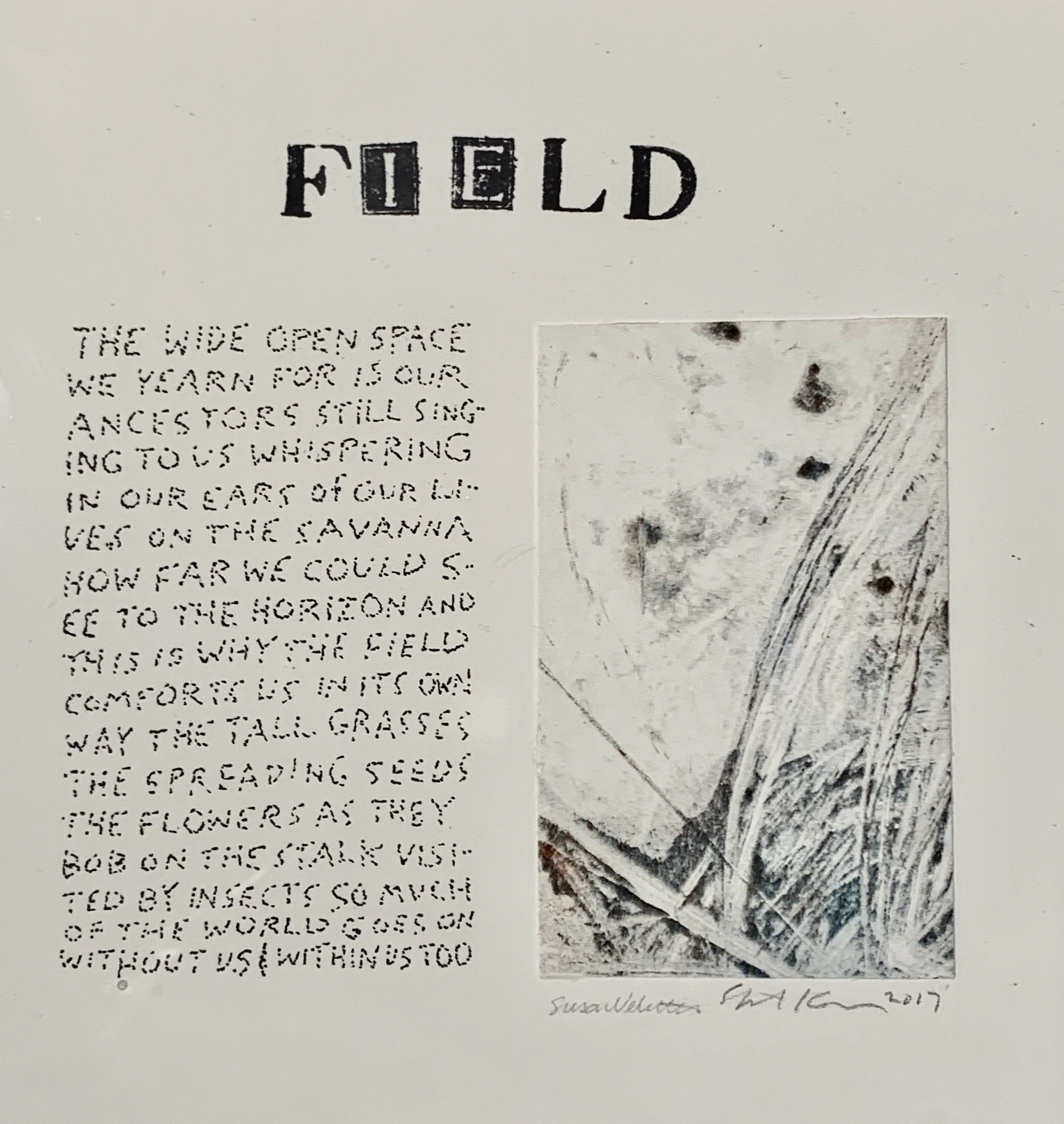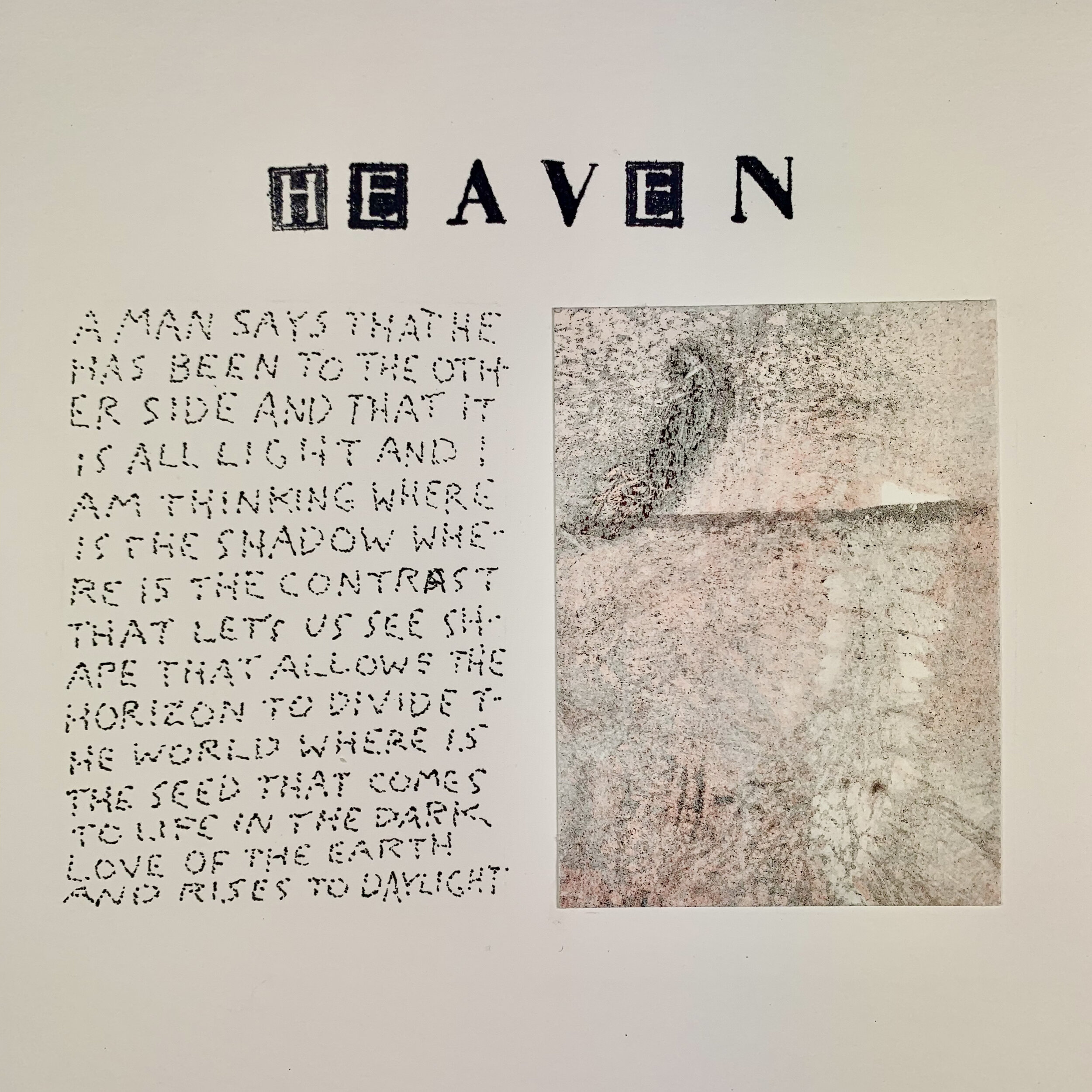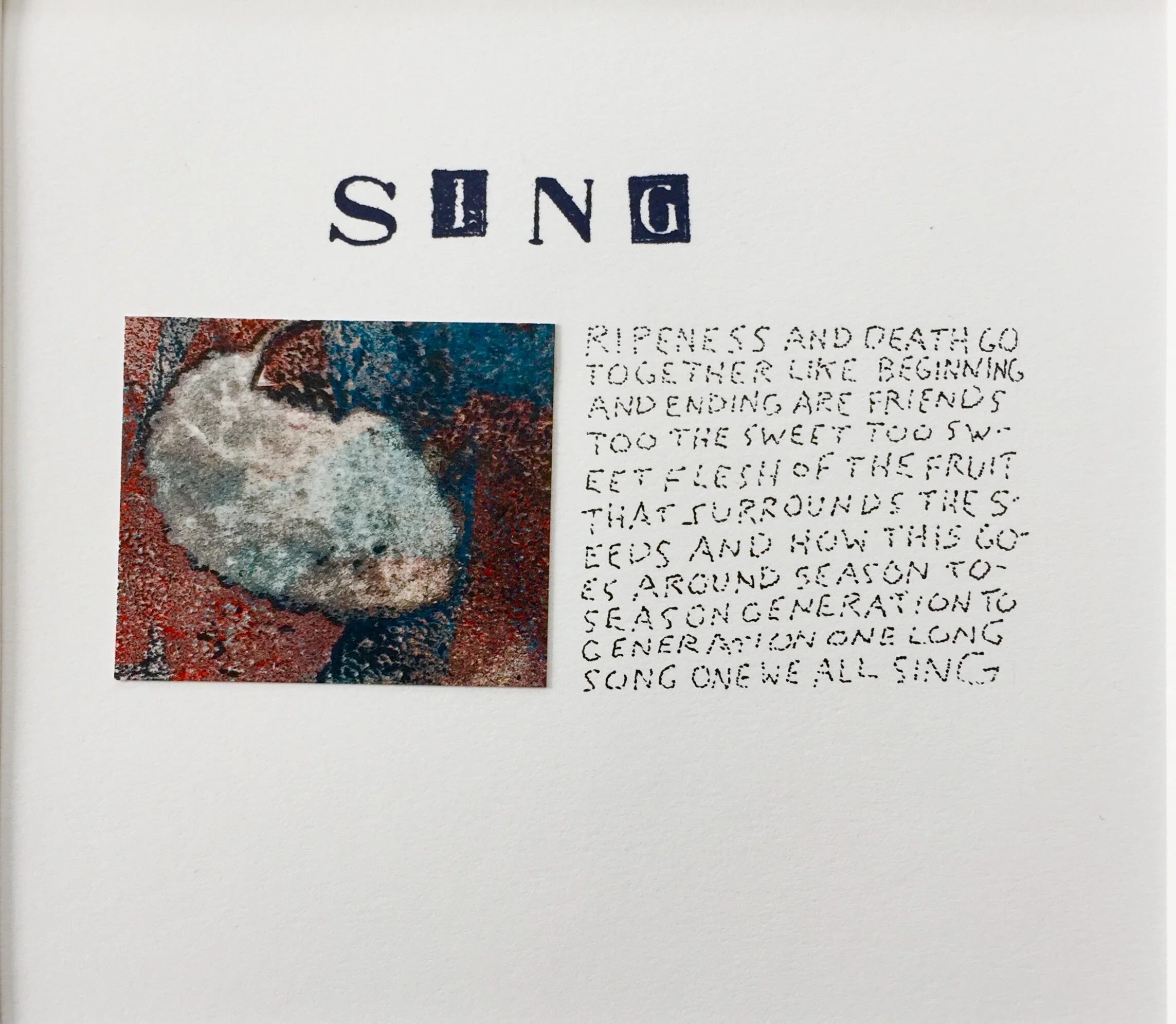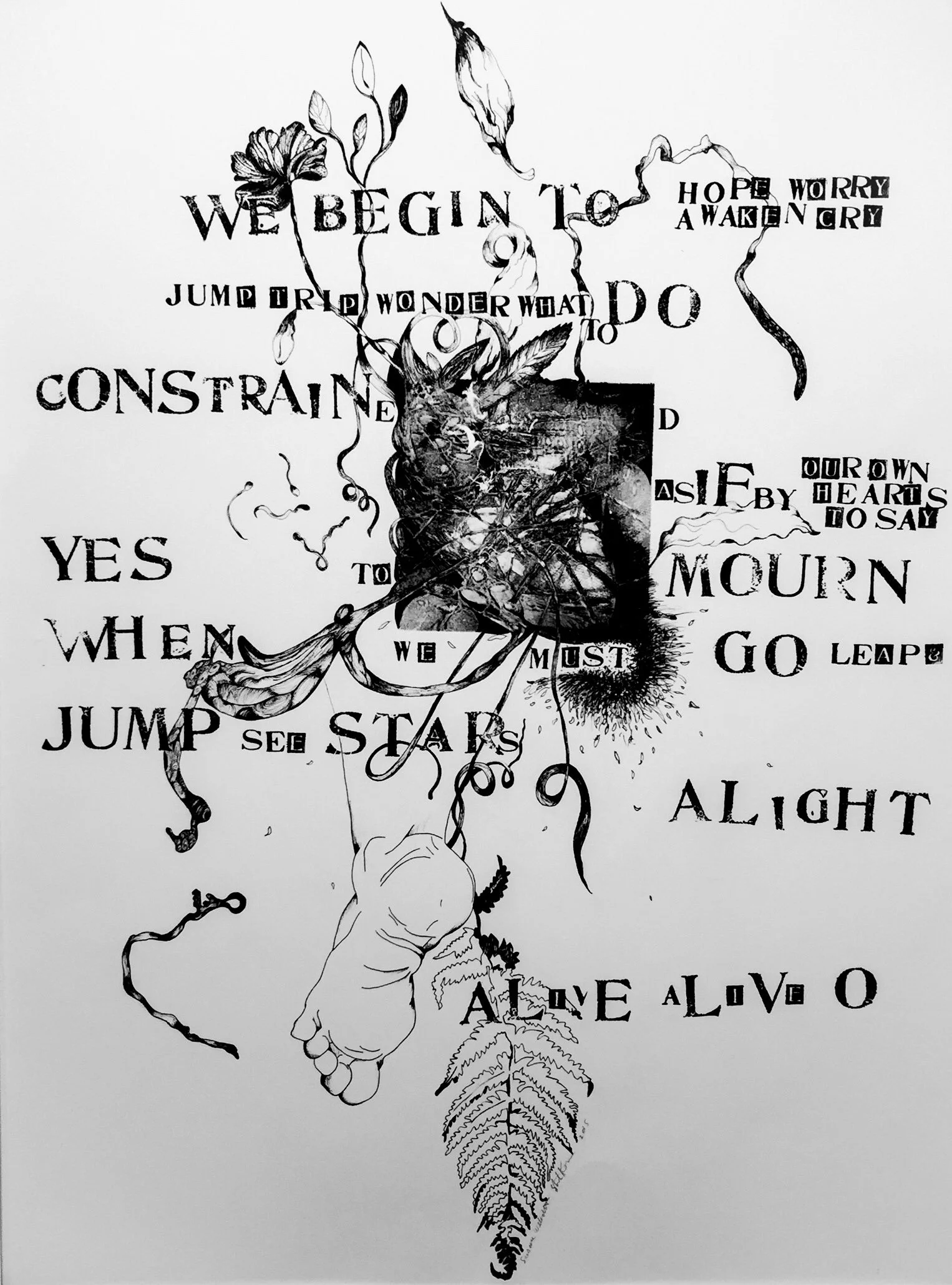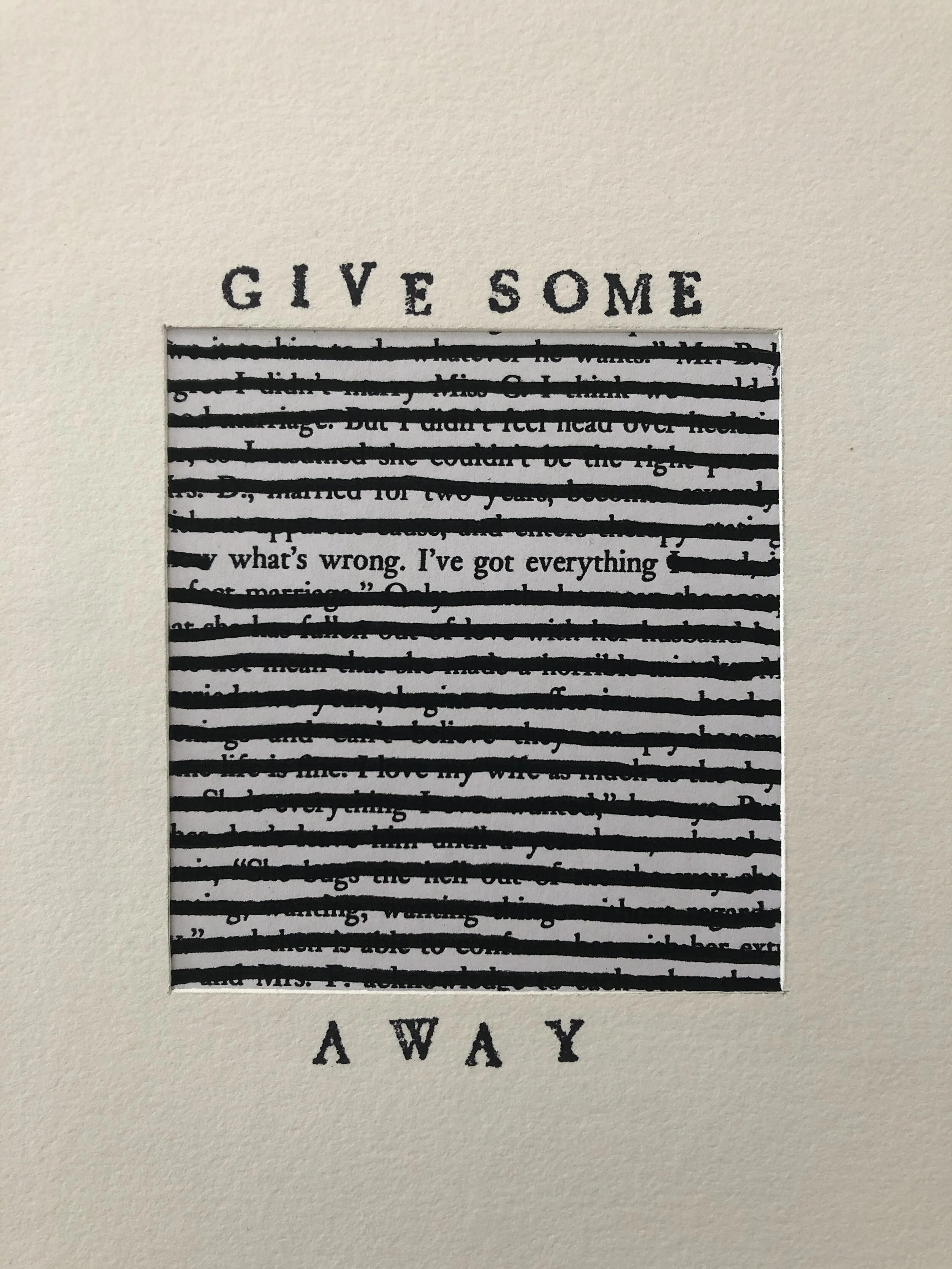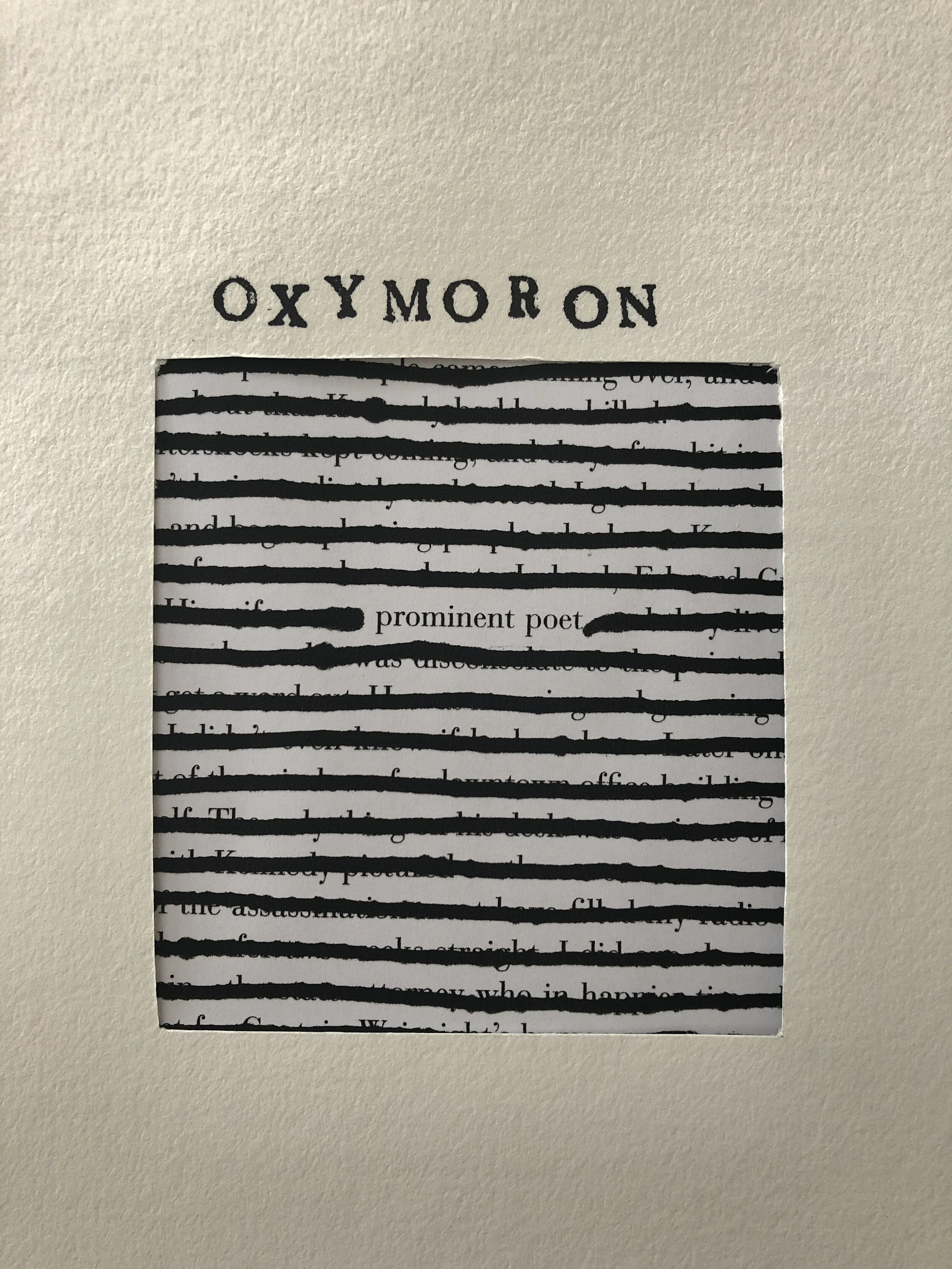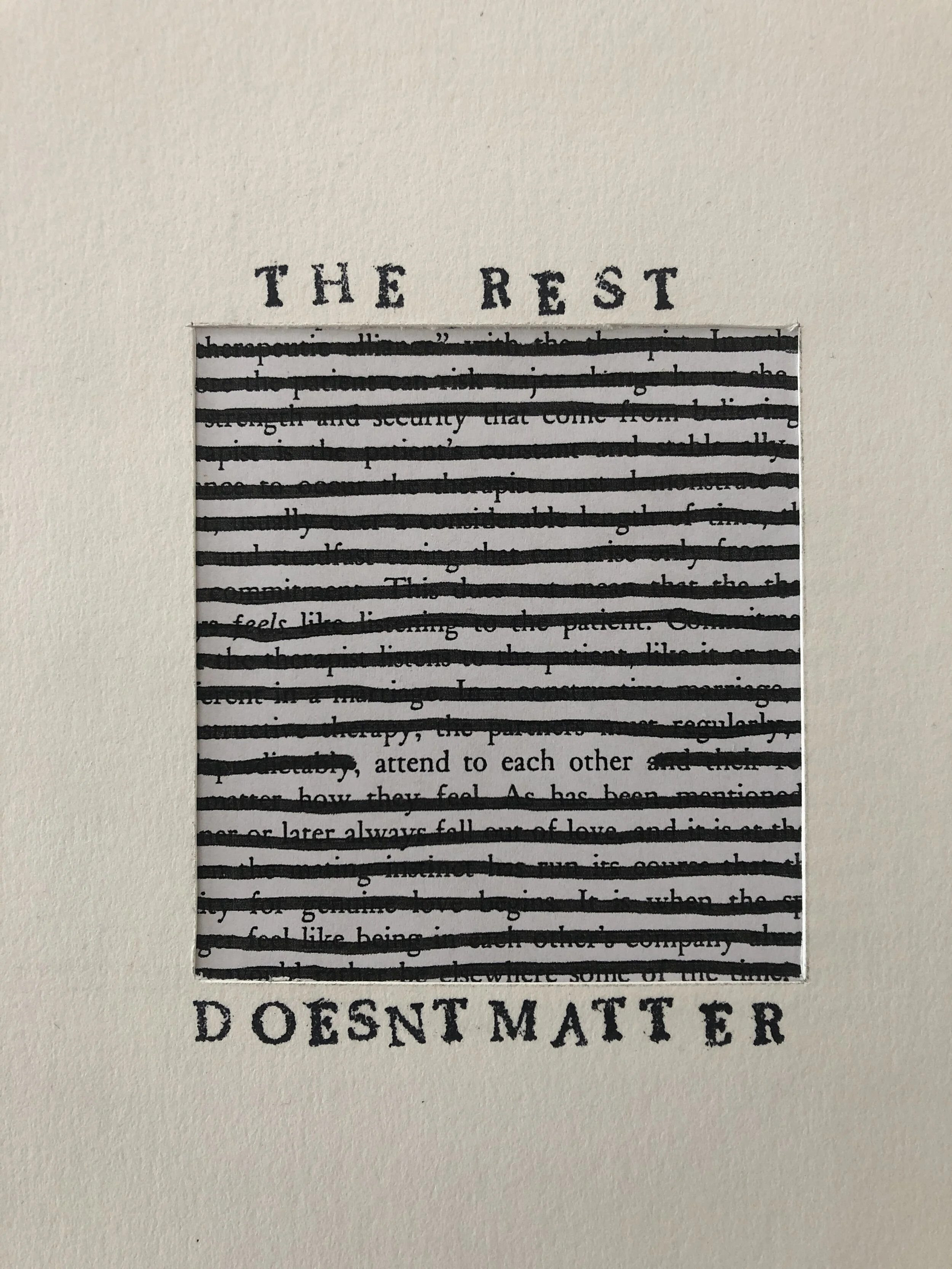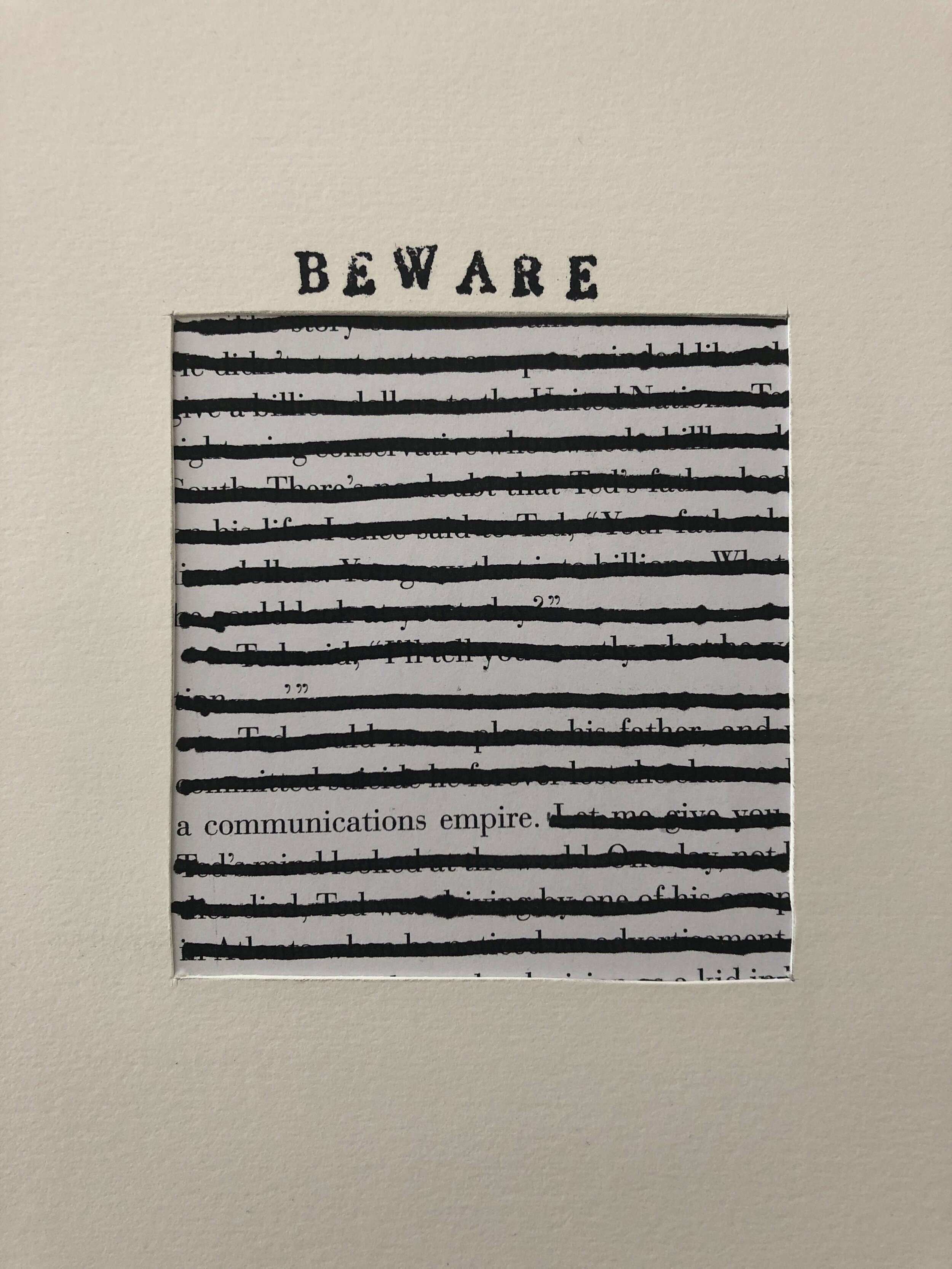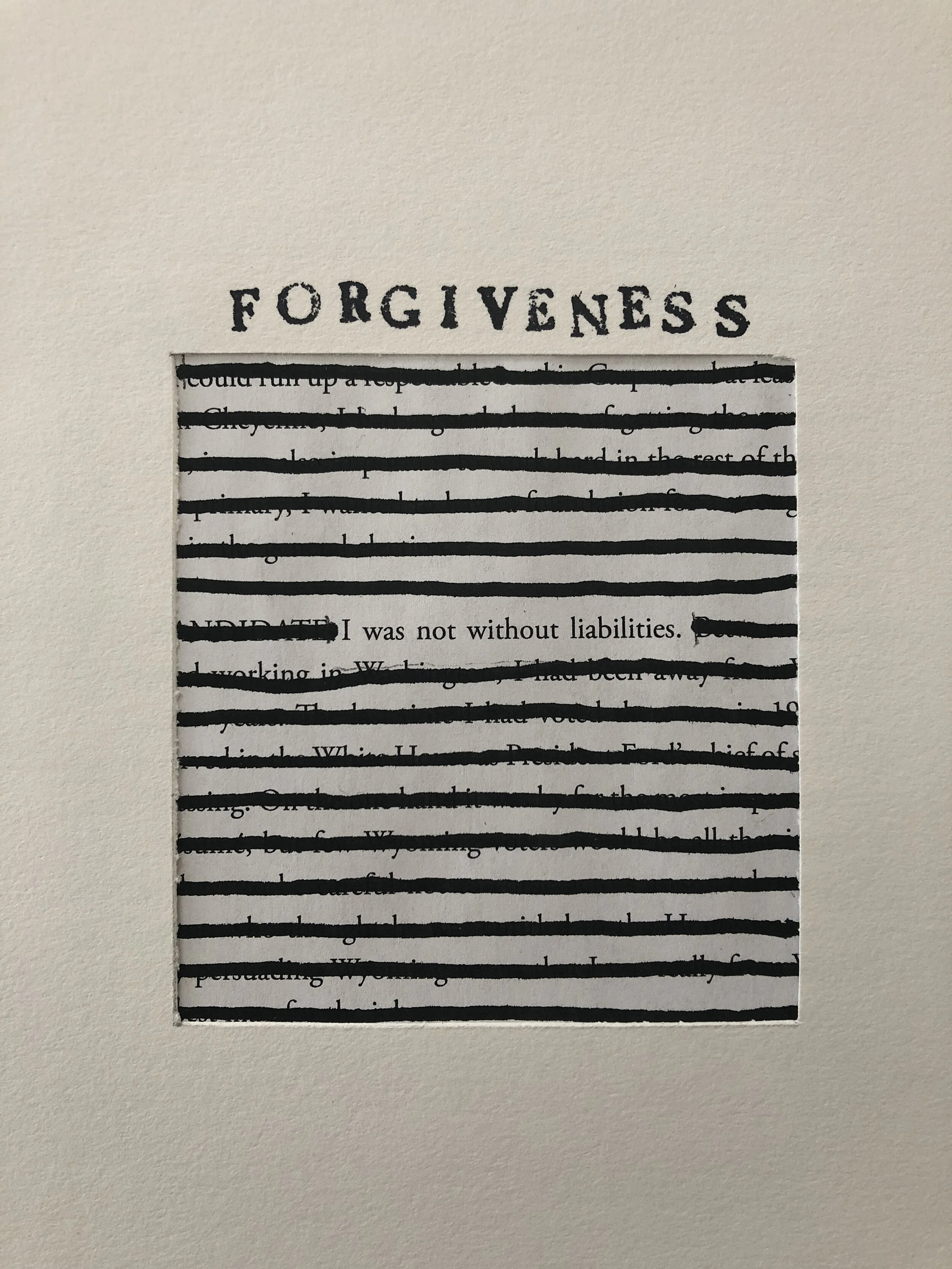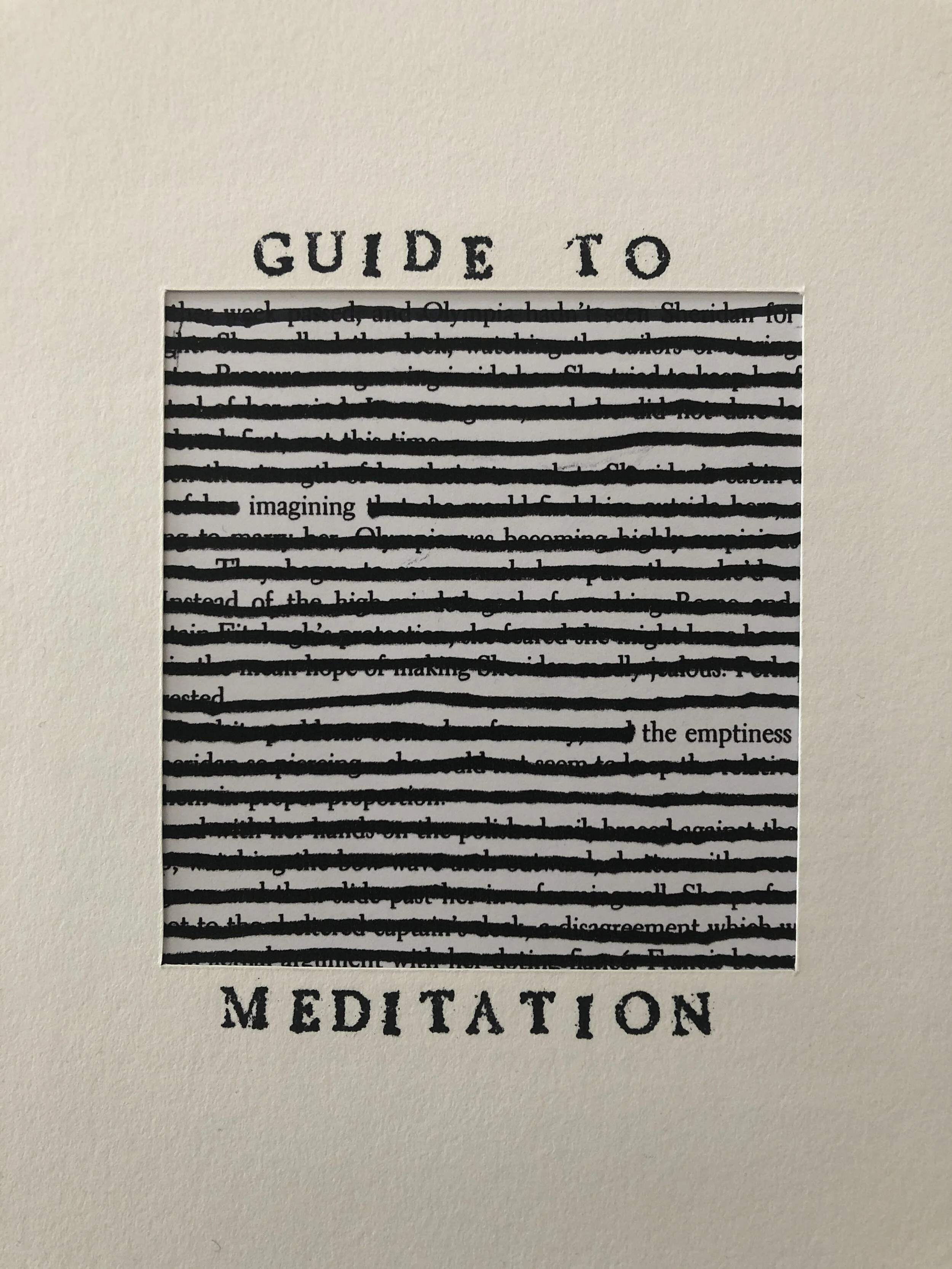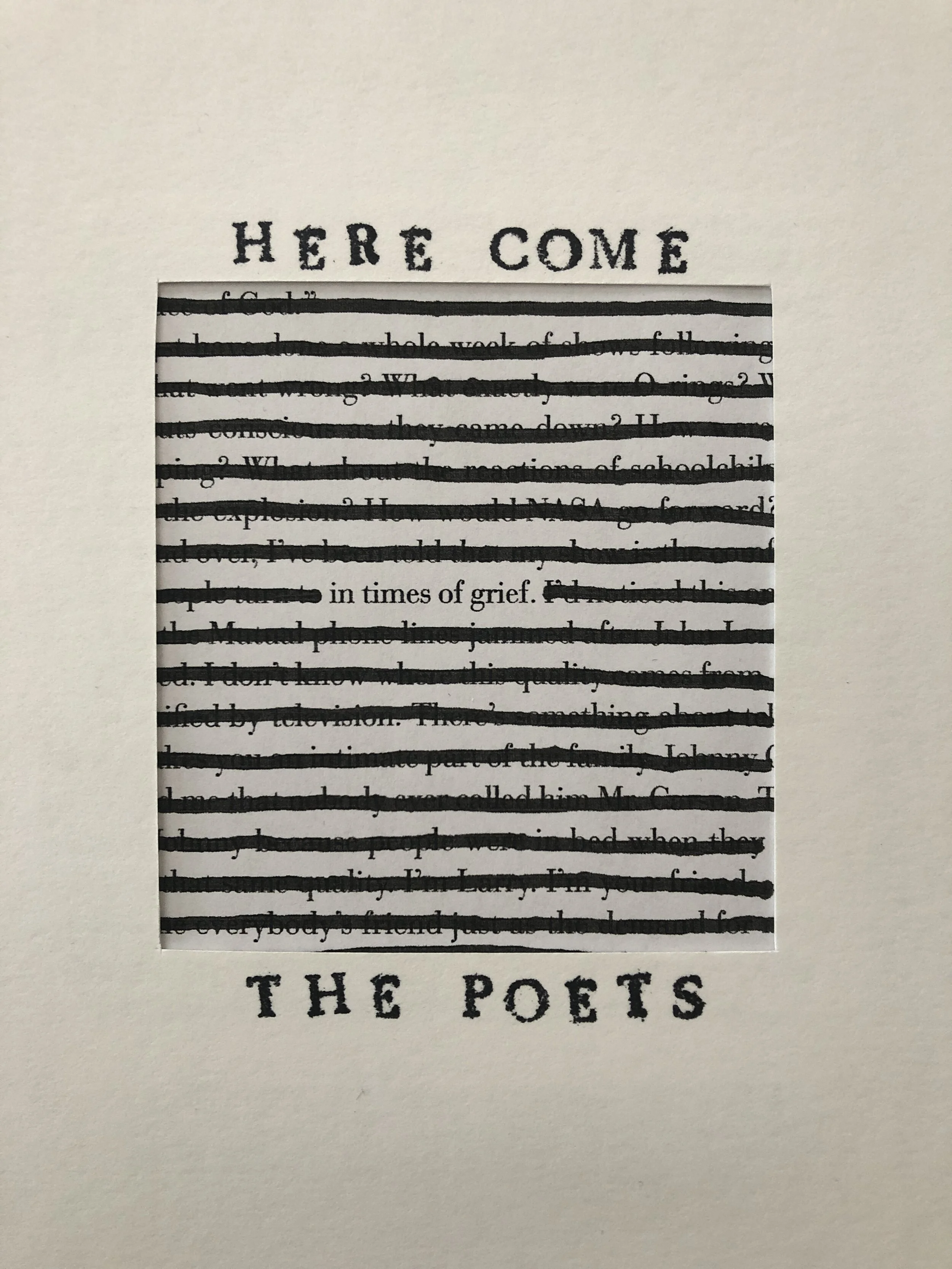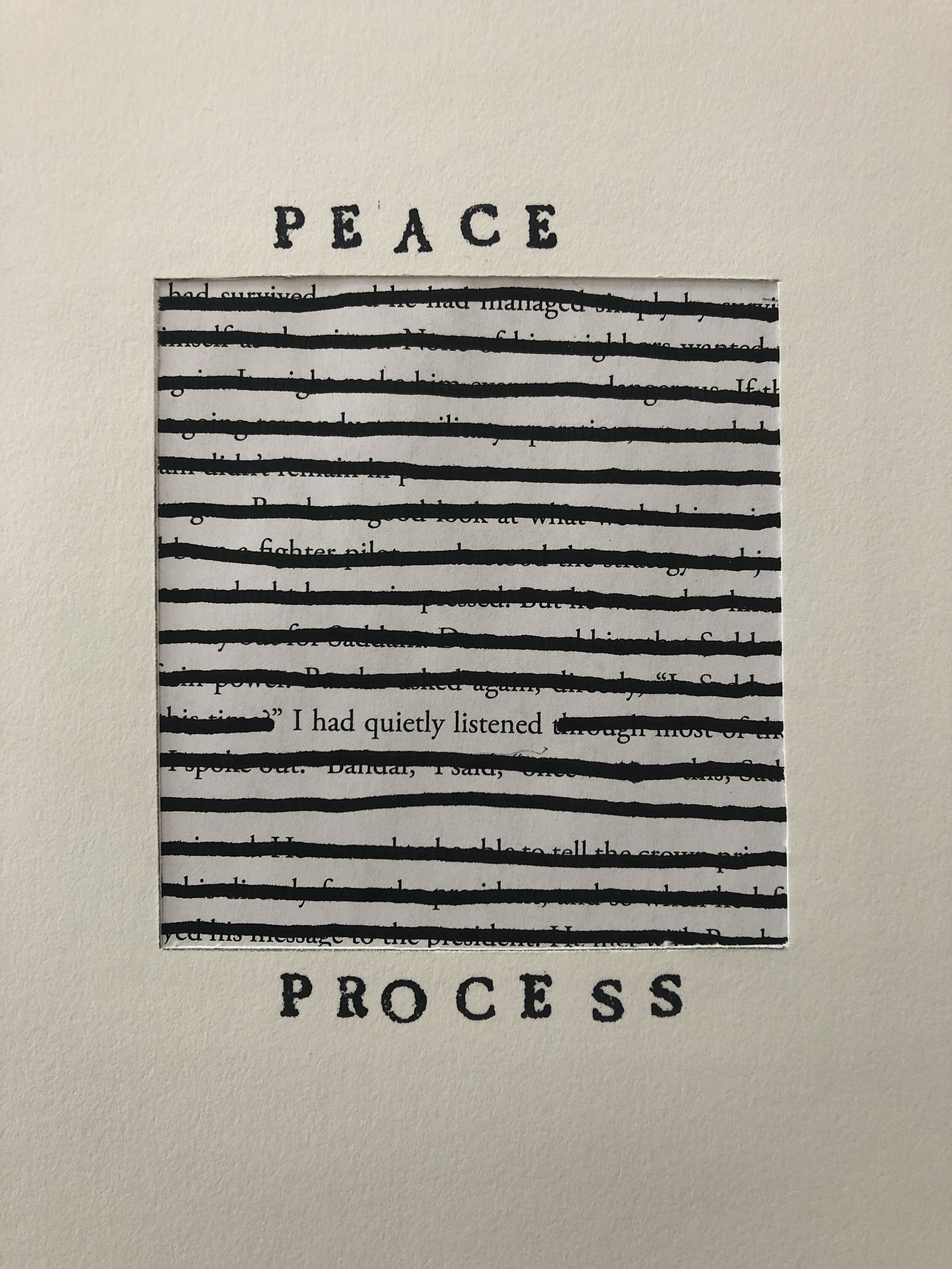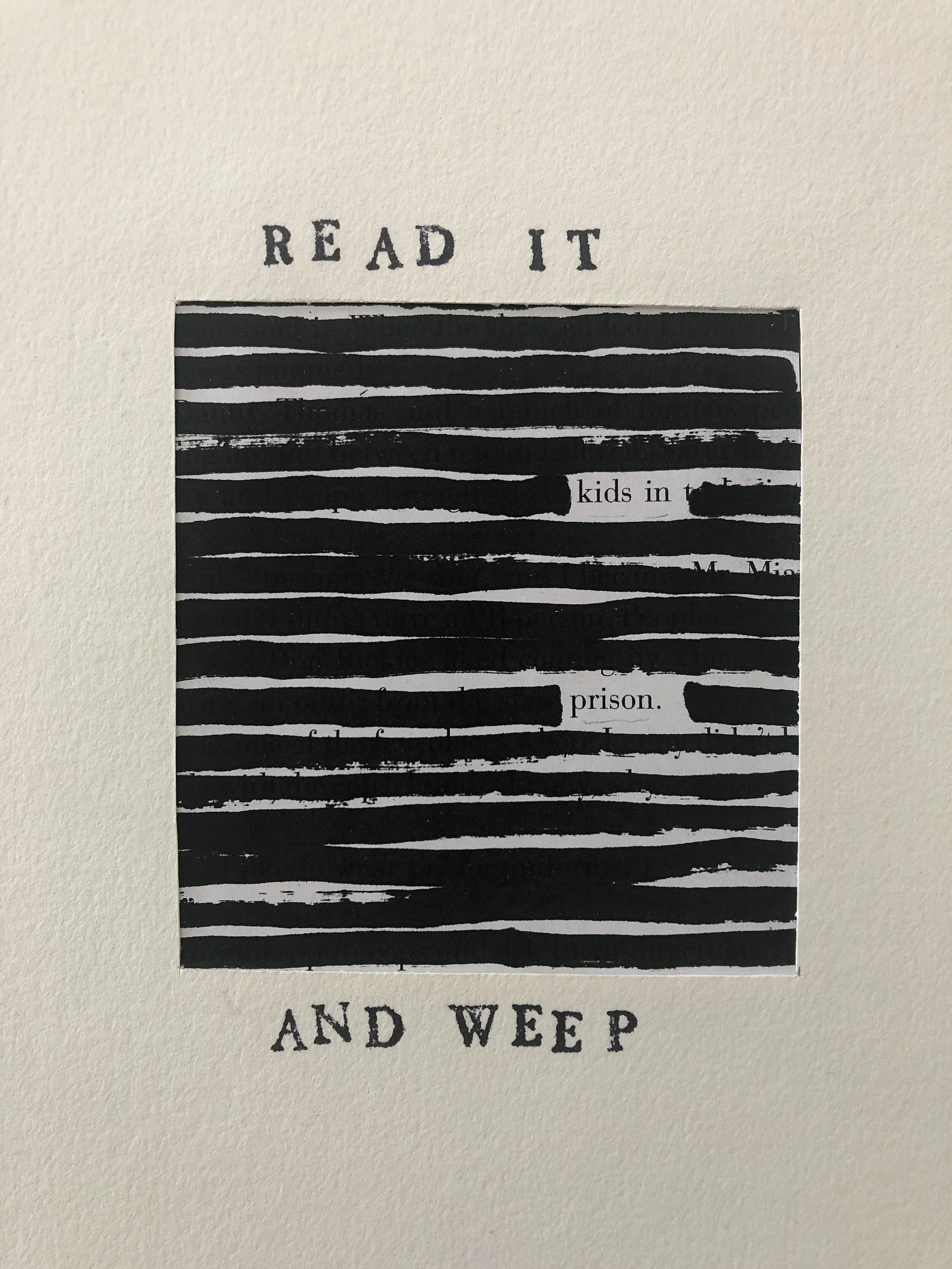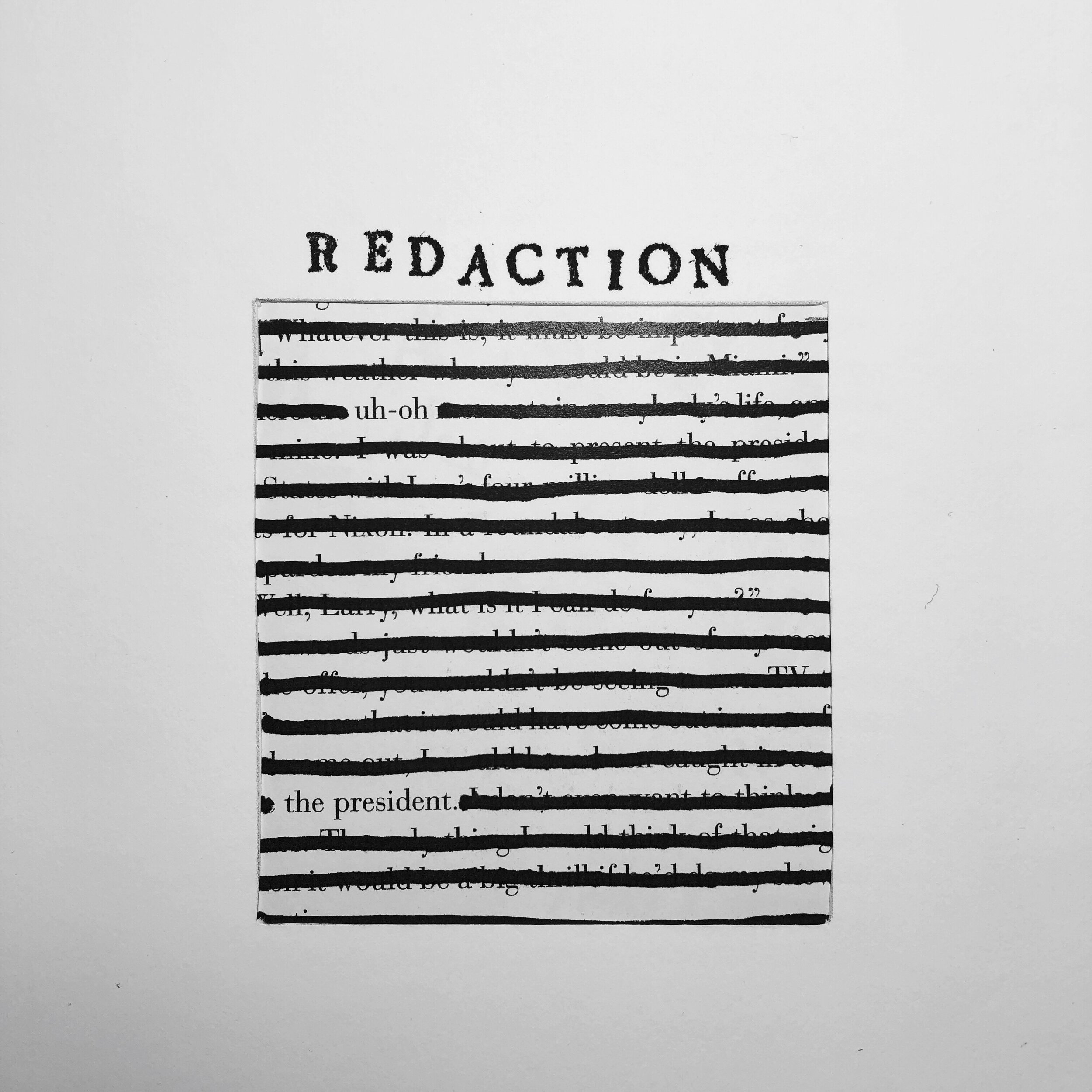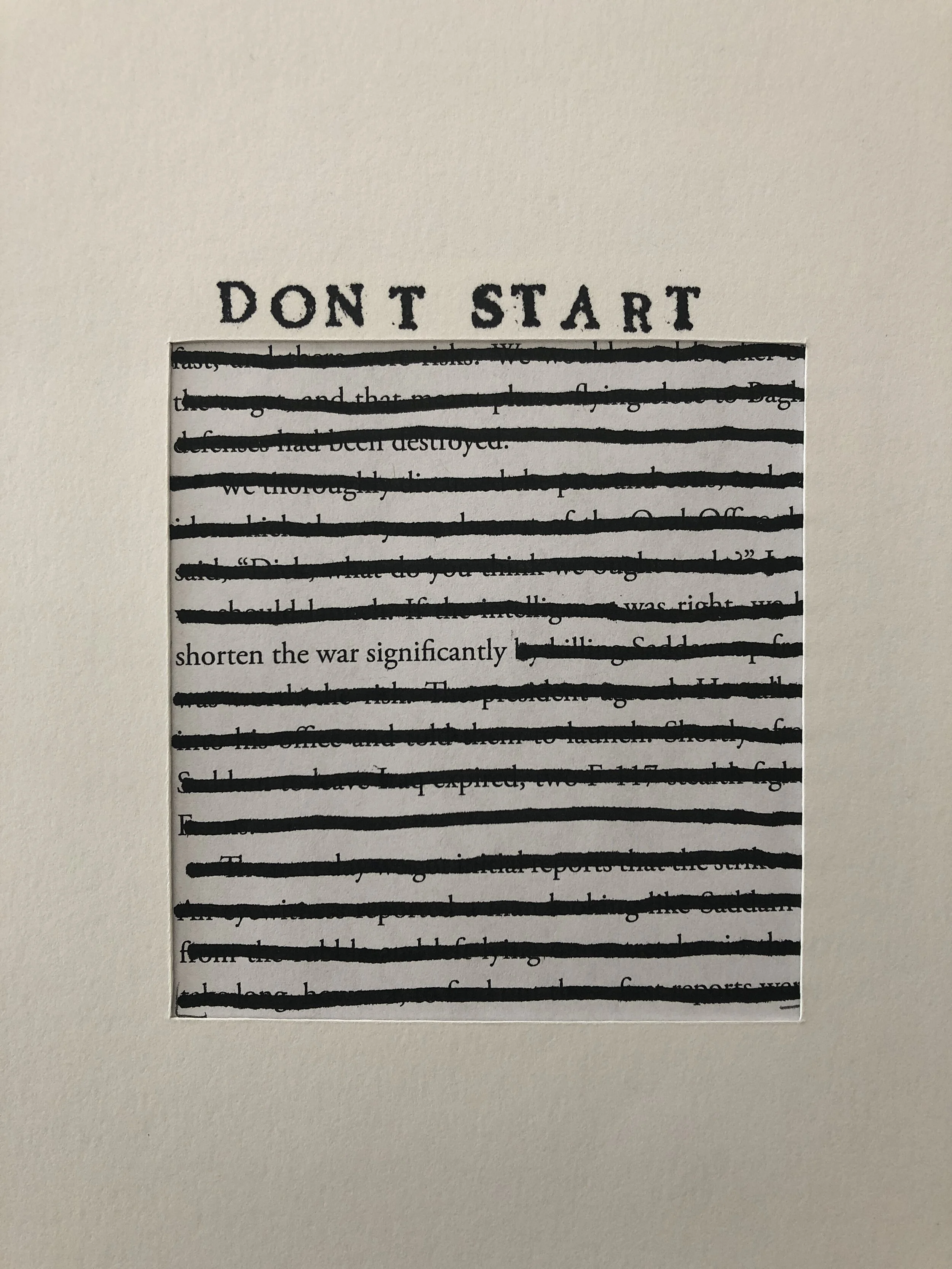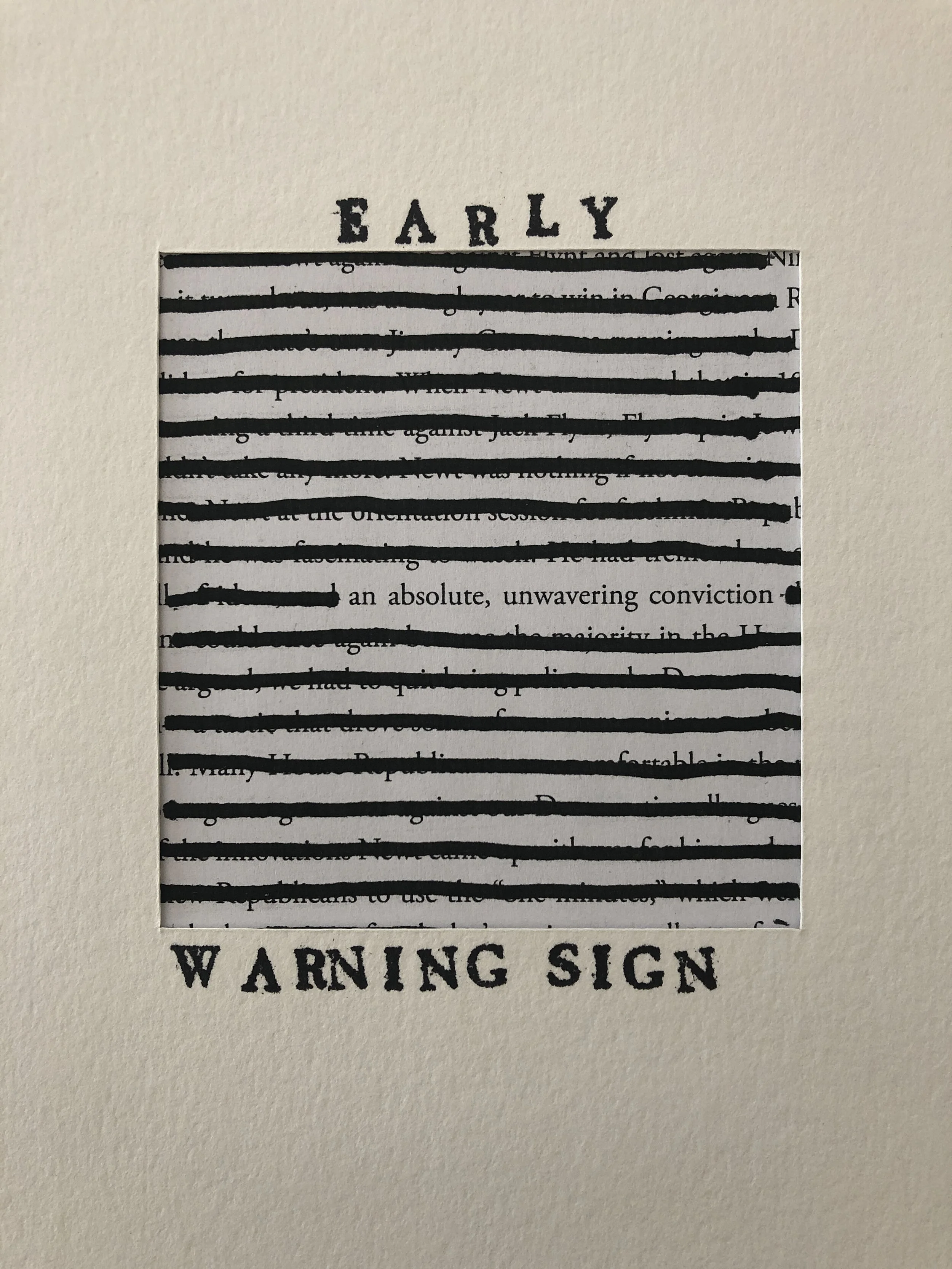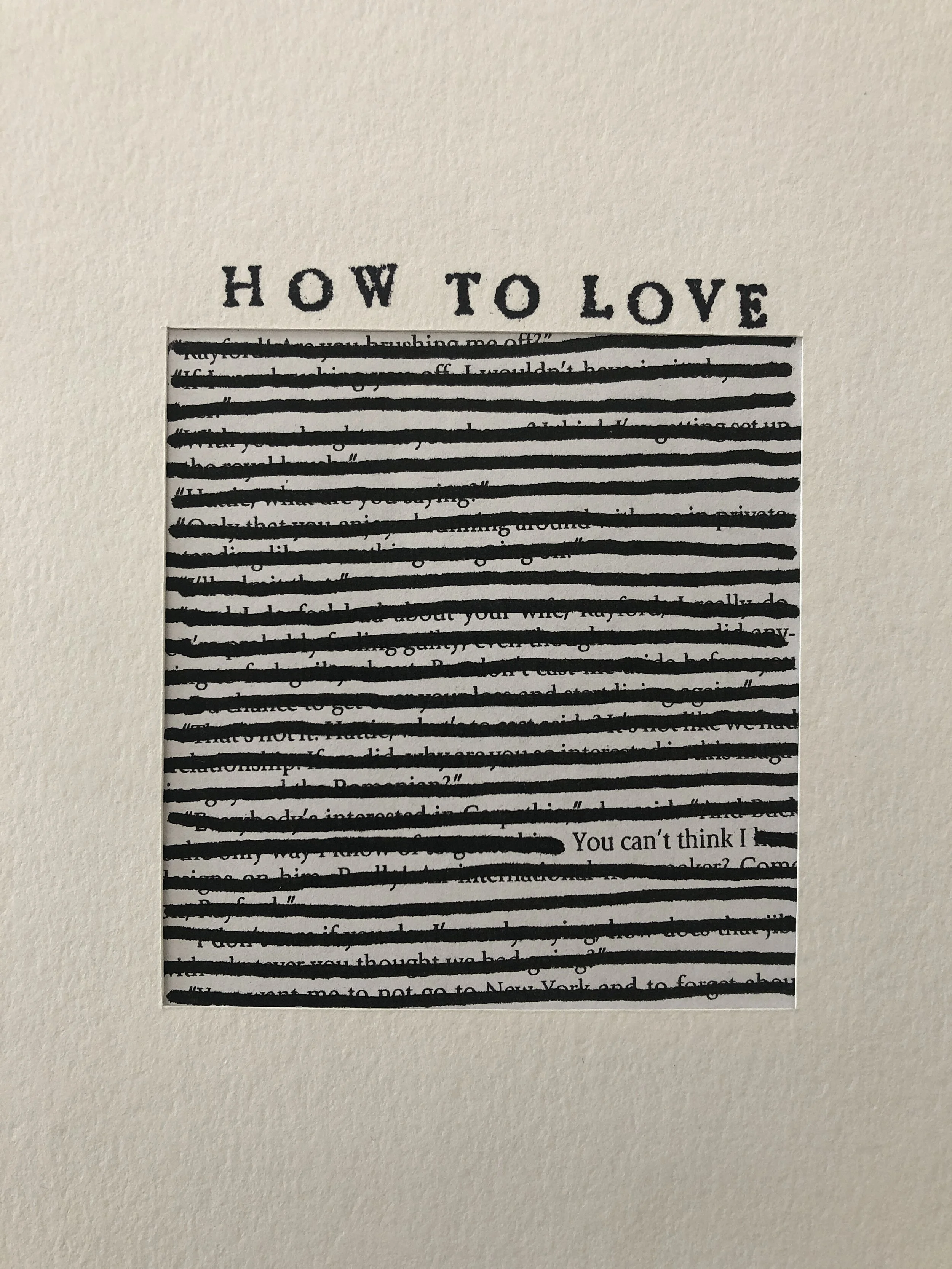Things Seemed to Be Breaking
Stuart Kestenbaum & Susan Webster
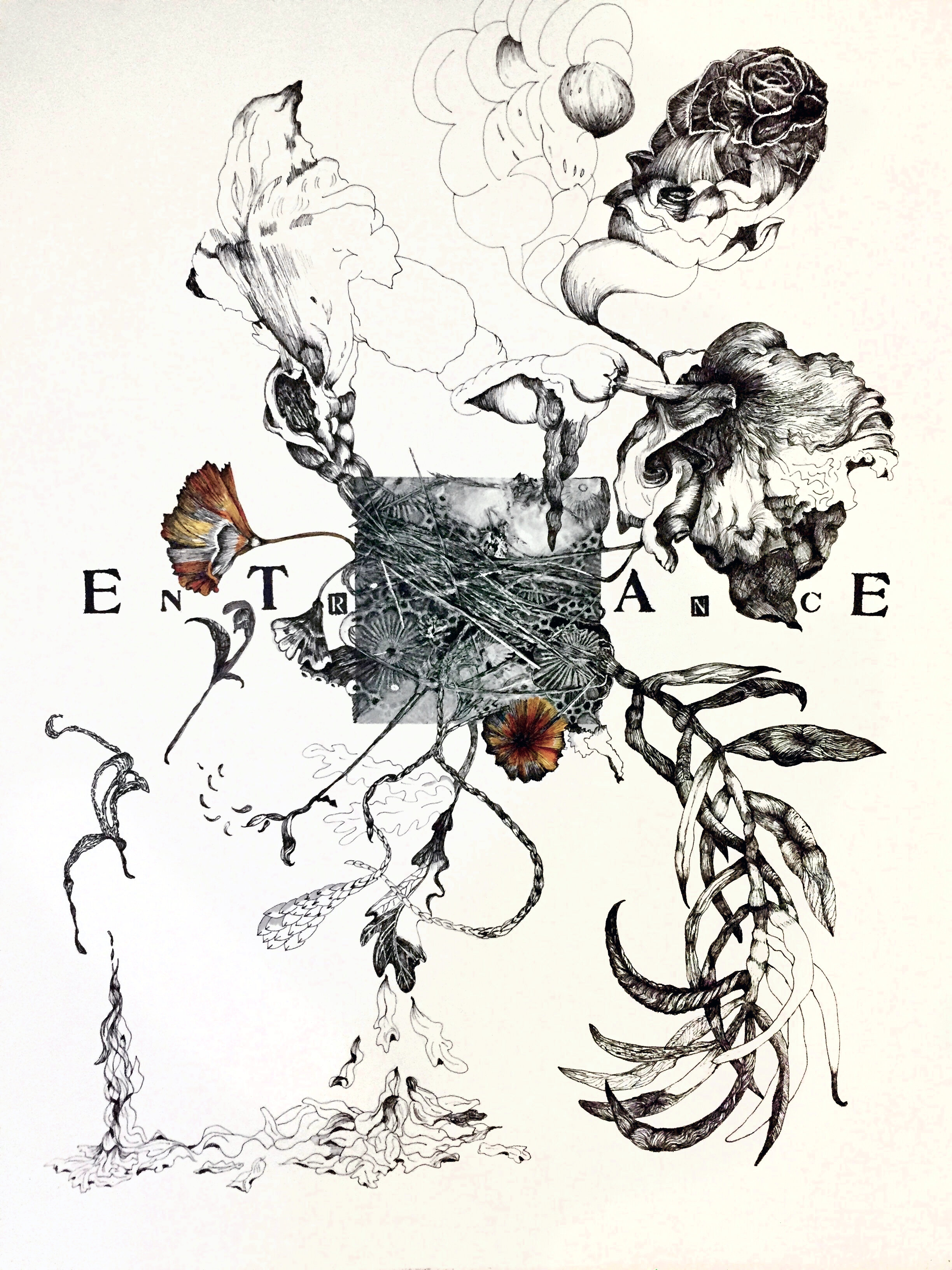
Stuart Kestenbaum & Susan Webster, Entrance (2017)
April 1 - May 22, 2021
About The Show
In celebration both of National Poetry Month and the publication of Maine Poet Laureate Stuart Kestenbaum's latest book of poetry, entitled Things Seemed to Be Breaking (Deerbrook Editions), this graceful, elegant and profound exhibition includes a framed selection of blackout poems from Kestenbaum's book in addition to work by his partner, visual artist Susan Webster, and also work on which the two artists collaborated.
Stuart Kestenbaum began writing blackout poems in 2016, while co-teaching a workshop with Susan Webster at Penland School of Crafts in North Carolina. He describes his entree into the form as follows:
One of our exercises was to create a piece of writing by placing a template over a page from an old discarded paperback book, isolating phrases and words. I had never worked like this myself, but Susan suggested it as a way for our students to create language to combine with visual art. I decided to work along with the class, and after I had blacked out words, it occurred to me to add rubber-stamped text to the mat above and below. I remember the first one….
As a poet, other than making line and stanza breaks, the visual thinking isn't a part of my writing. This body of work has given me a way to create visual objects. Blacking out the majority of the text creates a redacted look -- as if I'm working for a government agency that oversees metaphors. It also evokes for me something that is present in haiku -- where the expected and unexpected can meet in a few words and become something else.
Each piece is its own meditation. The words that remain and the words that are spoken back. The space in between.
~ Stuart Kestenbaum
Things Seemed to Be Breaking
(Deerbrook Editions, 2021)
Stuart and Susan describe their collaborative process on the larger mixed media pieces featured in this exhibition as follows:
The work that we make together is a partnership between image and word. One isn’t intended to illustrate the other, but to be a dialog, a conversation. We want echoes, amplifications, and some mystery. Typically, a piece will begin with an image by Susan, to which Stuart adds words—ink-stamped or handwritten. Susan then responds to the words with more imagery. Other times, Stuart will begin the sequence with words, to which Susan responds with imagery. We find that when we make work together, we surprise ourselves with where it leads us. We respond to one another’s work intuitively and both of us bring to the work elements that combine hope, loss, joy, and memory.
On the smaller series of monotypes, which the couple refer to as “Fragments,” they work together like this:
We begin with Susan making monotypes, usually 15” x 20”. She cuts these randomly, then selects images from the cut pieces. Stuart takes an image and creates a box the same size as the cut piece. He then writes within that box, responding to the image. The text is improvised and must fit within the limitation of the box. The image is glued next to the text, and in response to both the image and the text, he then adds a word in rubber-stamped letters.
Also included in the exhibition is Susan’s large-scale felt paper, paint and ink abstraction, A Way to Dissent is the artist’s visual ode to her female ancestors and to feminist icon Ruth Bader Ginsburg. Susan’s statement on this powerful piece is below:
I started this piece in the fall of 2020. I wanted to work with the limited pallet of white and black. I began the process of folding, painting, and cutting stencils to print on the felt paper.
The patterns that emerged reminded me of the lace and crocheted doilies my grandmother made, of the edges my mother’s pie crusts, and I felt connected to these womxn who had gone before me.
While I was working on the piece, Ruth Bader Ginsburg, Supreme Court Justice of the United States, feminist icon, and role model died. I remembered the lace collars she wore when she would offer dissenting opinions on the court and admired the way she held herself in those moments. It was a simple and radical gesture.
I layered and built this piece, remembering the lives and legacies of these womxn.
Featured Artists
I was born in Boothbay Harbor Maine and am the daughter of florists. Early memories are playing hide and seek in our maze of greenhouses where rows of pots were poised to root, sprout, or bloom and where the air was moist, lush, and fecund. I liked making things from the materials and supplies in our floral shop: frilly lacy ribbons, shiny foil, rolls of brown packing paper, carbon slips, cardboard scraps, discarded flowers, glue, pens, thick pencils, floral foam, staplers, scotch tape, scissors, and a pencil sharpener that worked like a charm.
Stuart Kestenbaum is the author of six collections of poems, most recently Things Seemed to Be Breaking (Deerbrook Editions 2021), and a collection of essays The View from Here (Brynmorgen Press). He was the host of the Maine Public Radio program Poems from Here and the host/curator of the podcasts Make/Time and Voices of the Future. Stuart Kestenbaum has written and spoken widely on craft making and creativity, and his poems and writing have appeared in numerous small press publications and magazines.
Preview the Exhibition
Drawing with graphite, ink, paint, hand stamped inked text, Susan Webster-image, Stuart Kestenbaum- hand stamped text
23” x 30”
$3,000
Drawing with graphite, ink, paint, hand stamped inked text, Susan Webster-image, Stuart Kestenbaum- hand stamped text
23” x 30”
$3,000
Mixed media: monotype, ink, glue, Susan Webster-monotype, Stuart Kestenbaum- handwritten and letter stamped text
“5 x 6”
$400
Mixed media: monotype, ink, glue, Susan Webster-monotype, Stuart Kestenbaum- handwritten and letter stamped text
5” x 5”
$400
Mixed media: monotype, ink, glue, Susan Webster-monotype, Stuart Kestenbaum- handwritten and letter stamped text
5” x 6”
SOLD
Mixed media: monotype, ink, glue, Susan Webster-monotype, Stuart Kestenbaum- handwritten and letter stamped text
5” x 5”
SOLD
Mixed media: monotype, ink, glue, Susan Webster-monotype, Stuart Kestenbaum- handwritten and letter stamped text
5” x 5”
$400
Mixed media: monotype, ink, glue, Susan Webster-monotype, Stuart Kestenbaum- handwritten and letter stamped text
5” x 4.5”
SOLD
Drawing with graphite, ink, paint, hand stamped inked text, Susan Webster-image, Stuart Kestenbaum- hand stamped text
30” x 23”
$3,000
Mixed media: monotype, ink, glue, Susan Webster-monotype, Stuart Kestenbaum- handwritten and letter stamped text
5” x 7”
SOLD
Mixed media: monotype, ink, glue, Susan Webster-monotype, Stuart Kestenbaum - handwritten and letter stamped text
6” x 6”
SOLD
Mixed media: monotype, ink, glue, Susan Webster-monotype, Stuart Kestenbaum - handwritten and letter stamped text
5.5” x 6.5”
$400
Mixed media: monotype, ink, glue, Susan Webster-monotype, Stuart Kestenbaum- handwritten and letter stamped text
5” x 7”
$400
Drawing with graphite, ink, paint, hand stamped inked text, Susan Webster-monotype, Stuart Kestenbaum- hand stamped text
23” x 30”
$3,000



